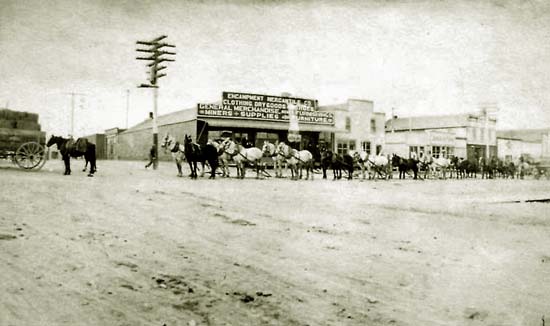
Freighters with teams in front of Encampment Mercantile Company, corner of
Freeman and 6th,approx. 1903.
North American Mercantile Company, a part of the Penn-Wyoming conglomeration had barns in
Walcott as well as Encampment and the mercantile at Rudefeha. In addition to sale of building materials, hay, feed and
grain in maintained a blacksmith Department and freighting department with 115 head of horses.
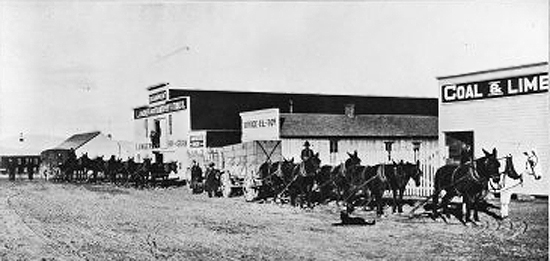
Ore wagons with teams, approx. 1905.
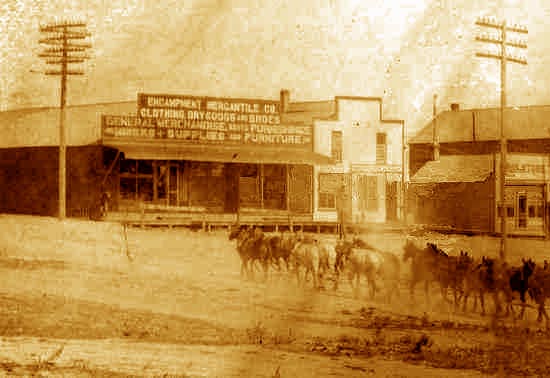
Freight Train passing in front of Encampment Mercantile Co.
The mercantile was owned by Ed Hyot Parkison (1868_1940). Parkison went into the mercantile business in
1898. For a short period of time he joined his brother in Nevada and then returned to Encampment. Parkison
also operated a mercantile in Medicine Bow and engaged in ranching. With W. H. Parkison he had an
interest in the Beaver Copper Mining Co.
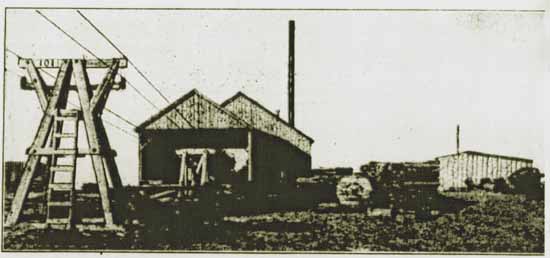
No. 1 power station aerial tramway, approx. four miles from smelter.
Need for the horse-drawn freighters ended with the coming of the Saratoga & Encampment Railroad in
1908.
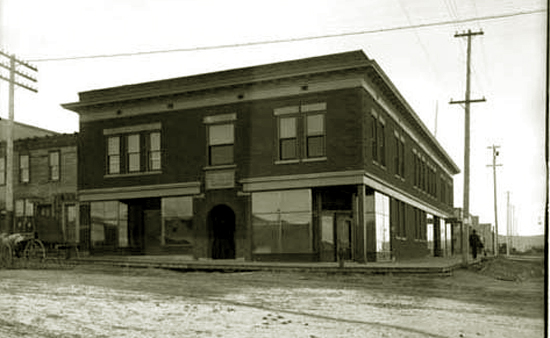
The E & H Building, approx. 1904.
The E & H Building, at the corner of Freeman and 6th across from the Encampment Mercantile, was named for Willis George Emerson and W. C. Henry. The steel-framed, brick veneered building was constructed
in 1903. When the building was first opened, the bottom floor housed the North American Trust Company, Henry W. Britt's drug store,
F. W. Sherrod's barbershop, and a saloon.
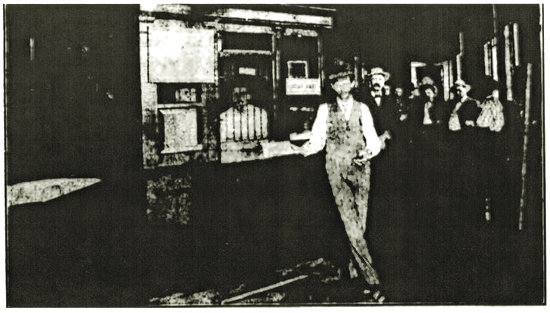
Teller's Cage North American Trust Company, 1904.
Upstairs were the office of the North American
Copper Company, W. C. Henry, Charles Winter, and Dr. Harry Irwin. The building had two vaults, one for the use of the bank and the second housing
safety deposit boxes. The building, according to the Encampment Herald, was the finest "off-railroad" building in the state.
The building still stands and is one of the few reminders of Emerson and W. C. Henry still in existence. Sherrod's barbershop had three chairs, a shoe shine
stand, a bath, and housed a laundry agency. In January of 1906, Sherrod added a second porcelain bathtub. Dr. Irwin was the physician for the Copper
Company.
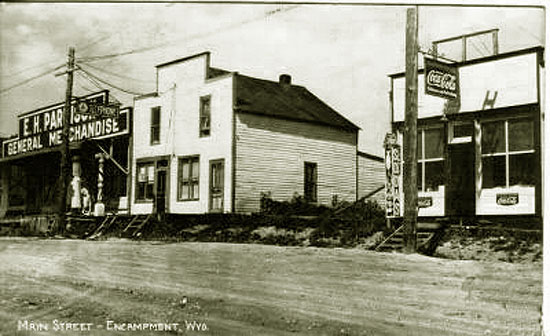
Mercantile and Drug Store, Encampment approx. 1940.
Next page, Encampment continued.
|